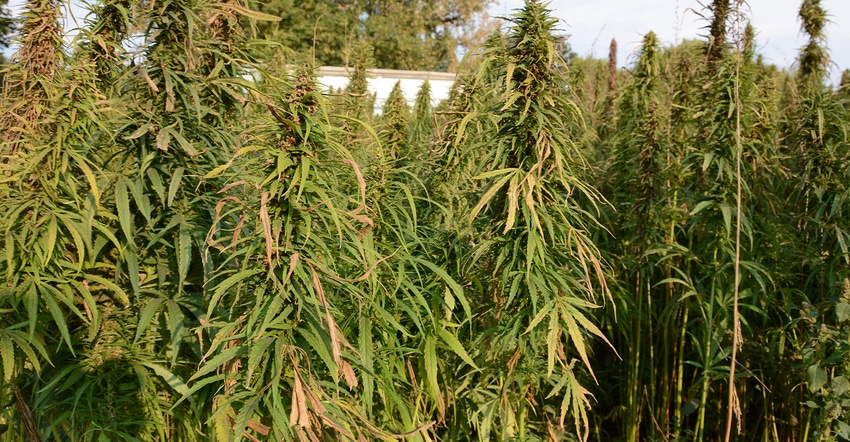November 21, 2019

Eleven varieties of industrial hemp were grown for the first time in 2019 at the North Dakota State University Hettinger Research Extension Center as part of statewide trials.
Dual purpose varieties for grain and fiber were no-tilled June 3 into lentil stubble. Varieties were seeded at 16 pure live seeds per square foot, which produced a targeted stand of 523,000 plants per acre.
The hemp yield averaged 201 pounds per acre.
“We had serious bird feeding that significantly reduced yields,�” reports John Rickertsen, NDSU HREC research agronomist. “It wouldn’t be surprised if they ate three-quarters of the seeds. Sparrows and goldfinches loved it, and the doves ate whatever fell on the ground.”
About 70 miles to the north at the Dickinson Research and Extension Center, hemp plots yielded 300 to 900 pounds per acre and averaged 700 pounds per acre in 2019. Hemp has yielded as much as 2,000 pounds per acre in other areas of North Dakota.
It was wet in southwest North Dakota in 2019.
“I question how hemp will hold up in a more typical western North Dakota year — i.e. much drier and hotter,” Rickertsen says.
Growing hemp tips
To produce a successful hemp crop, Burton Johnson, NDSU plant science professor and new crops specialist, offered these tips during HREC’s annual field day:
Planting depth. Hemp seed should be planted less than 1-inch deep. Expect to have a 30% seed mortality rate.
Soil temperatures. Soil temperatures should be at least 50 degrees F.
Weed control. “Weed control is what you did the previous year,” Johnson says. HREC applied a glyphosate burndown prior to planting hemp. No herbicides, pesticides or fungicides are currently labeled for use in hemp.
Rotate crops. Hemp crop is susceptible to white mold. Therefore, the crop rotation is important to reduce disease potential. Other crops susceptible to white mold include canola, dry beans and sunflower.
Harvest. Hemp is harvested around Labor Day while the plant is still green, at about 13-17% seed moisture. The seed must be immediately dried to 8% moisture for long-term storage. With strong, lengthy fibers that can grow several feet long, the hemp fibers can wrap around rotating combine shafts like fishing line on a reel. It may damage machinery and create a fire risk.
“Hemp has a lot of possibilities, given all the end-use applications in food, fiber and health products. I think the value now is in the grain part,” Johnson says. “As far as a new crop, we’re just in the beginning of hemp commercialization.”
Dart is a writer from Elgin, N.D. Lon Tonneson contributed to this article.
About the Author(s)
You May Also Like




